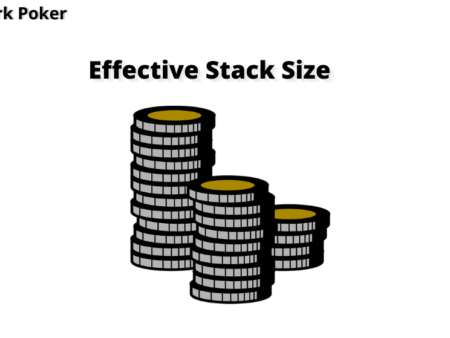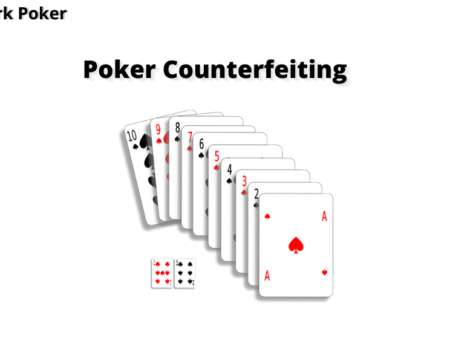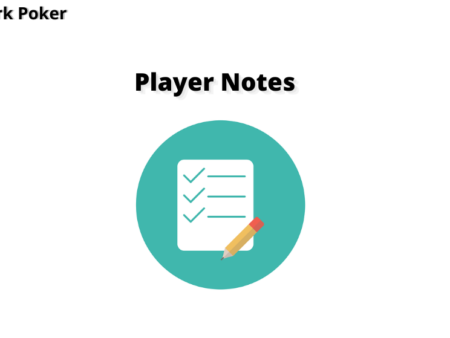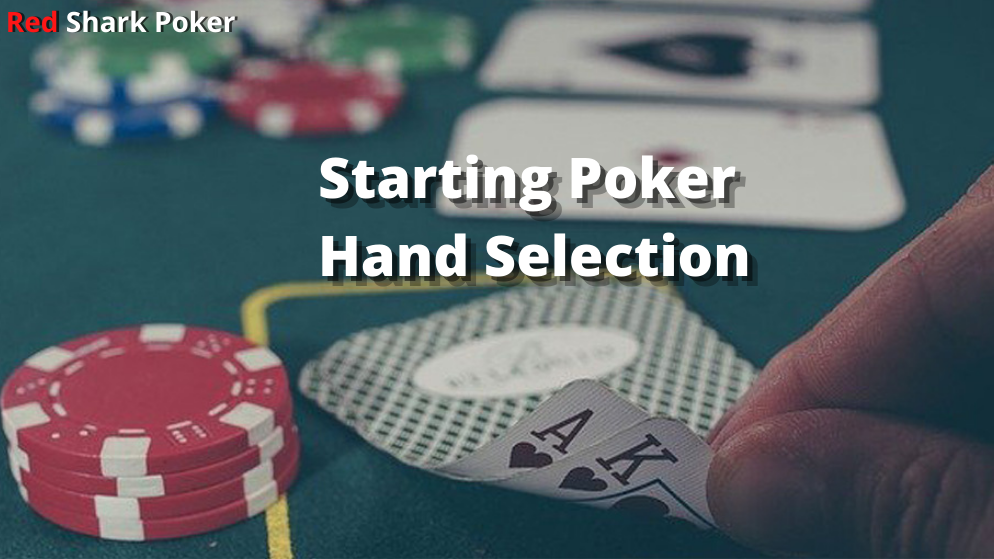
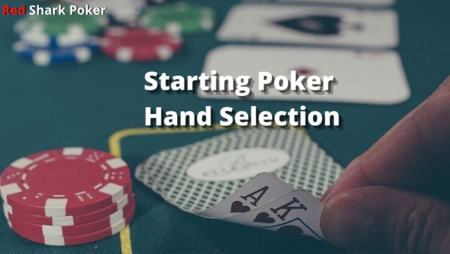
Should I play this hand? Or should I fold? Do you have these doubts while playing poker? If you do, you need to brush up on your starting poker hand selection. Learn the best way to choose which poker starting hands to play and which ones to fold.
What is Starting Poker Hand Selection?
In layman’s terms, starting poker hand selection means choosing the starting hands you want to play in poker. The selection implies which are the hands with which you should call, raise and fold. It is one of the fundamental poker strategies that helps you win pots. So, this means that you need to know which are the best starting hands and the worst starting hands in poker.
What are the Best Starting Hands in Poker?
There is no fixed definition of the best starting hands as winning is based on the community cards that hit the board. However, there are top poker starting hands that have a better win percentage than the rest. Let’s categorize the starting poker hands to know them better.
Categories of Starting Poker Hands
1. Paired Hands (Pocket Pairs)
Paired Hands are also called pocket pairs. They are two cards of the same rank; for example, A♥ A♦ and K♦ K♣. When you are dealt pocket pairs, you have an added advantage as you already have a ‘One Pair’ even before the community cards are laid out. However, the odds of getting a pocket pair is only 5.9%, which means that you can get a pocket pair once every 16 hands.
Not all pocket pairs are the same. Each pair has a different win percentage. You can further classify them into the following categories:
| Category | Pocket Pairs |
| Premium | Aces to Jacks (AA, KK, QQ, JJ) |
| Medium | Tens to Sevens (TT, 99, 88, 77) |
| Small | Sixes to Twos (66, 55, 44, 33, 22) |
a) Premium Pocket Pairs: AA, KK, QQ and JJ are premium pocket pairs. These hands have over an 80% win percentage over other hands on the preflop. However, it is best played against a single opponent. So, always raise or re-raise (3 Bet) or even go all-in from any position to get the maximum value out of these best starting Texas Holdem hands.
b) Medium Pocket Pairs: TT, 99, 88 and 77 are medium pocket pairs. These starting poker hands are not as strong as the premium pairs, but they have the potential to win pots at showdowns. You can play these hands from any position. You should raise if no one raised before you, and it is better to call a raise. However, you should be careful to a re-raise.
c) Small Pocket Pairs: 66, 55, 44, 33 and 22 are small pocket pairs. You should play these pair cautiously from late positions. Mostly call to see a cheap flop as the chances of hitting a Set (Three of a Kind) is 10.78%. However, if you face a huge raise or re-raise, just fold.
Also Read: The Right Way to Play Pocket Pairs in Poker
2. Non-Paired Hands
This is where things get tricky. As mentioned above, you can get a pocket pair once every 16 hands. What will you do when you don’t get one? Will you fold every time? Definitely NOT! So, which are non-paired hands to play? Let’s find out! Evaluating non-paired hands depends on many factors. Let’s examine those factors.
a) Suitedness
If you have 2 cards of the same suit, you have a higher chance of hitting a Flush. Suited Hands have around 6% probability of hitting a Flush while non-suited hands have only 1.3%.
i) Suited Hand with High Cards
If you are planning on playing with a suited hand, you should have at least one high card; for example, A♥ 5♥ and K♣ 9♣. If you don’t hit a flush, your high card can pair up on the board and help you win the pot. Also, if four cards of the same suit hit the board, there is a possibility that your opponent might also hit a flush. In this scenario, your high card will give you the nut flush (best hand). For example, A♥ 9♥ is the best hand on a board like J♥ 6♥ 4♣ 8♥ 2♥. Here you hit your flush on the turn, and if you opponent continues calling on the river, you will still have the best hand even if your opponent also has a flush.
ii) Suited Hand with Low Cards
It is ok to see a cheap flop with a suited hand with low cards. If you hit a flush, it is a pretty rare occurrence for two players to hit the flush with suited hands. However, this doesn’t hold true if there are four cards of the same suit hit the board. If you enter the pot with 7♥ 5♥ and the board reads J♥ 6♥ 4♣ 8♥ 2♥, your opponent might have the nut flush with a bigger suited card.
b) Connectedness
Connecting cards or connectors have better chances of forming a straight. Hands like K♦ J♥ and J♣ T♥ have a good possibility of connecting with the board and forming a straight. Also, there are gappers which are connecting cards with a gap of 1 or 2 cards. For example, K♦ J♥ has a gap of 1 card in between. K♦ 10♥ has a gap of 2 cards. These hands reduce your chances of hitting a straight. You will need to analyze the board texture and calculate your outs before making any bets with gappers. The best connecting hands are suited connectors.
Suited Connectors: This hand is the best of both worlds. You have a suited hand that increases your chances of hitting a Flush along with connecting cards that might form a straight. The best starting poker hands in this category are AK suited (s), KQs, QJs, JTs and T9s. Such hands can be played from any position. Suited connectors can also give you open ended straight flush draws that have 15 outs. If you have J♥ T♥ and the flop reads 9♥ 8♣ 3♥, you have 15 outs to make a flush or straight. However, you should play carefully with lower suited connectors like 76s or 54s. You should play such hands from late positions and fold from early positions.
Win Percentage of Starting Poker Hands
You must be wondering why we discussed the aforementioned starting hands as the best poker hands. There is a reason for that. Check out the poker starting hand chart with the win percentage. This starting hand chart shows the winning chances based on the assumption that your opponent’s cards are not known.
Hands from left to right are suited, and the hands from top to bottom are offsuit. The hands that have the same denomination on X and Y axis are pocket pairs. You can see that K9 suited has a 61% winning chance and K9 offsuit has a 59% winning chance. You don’t need to memorize this poker starting hand chart, but a quick perusal will give you the general idea of the best starting hands in poker.
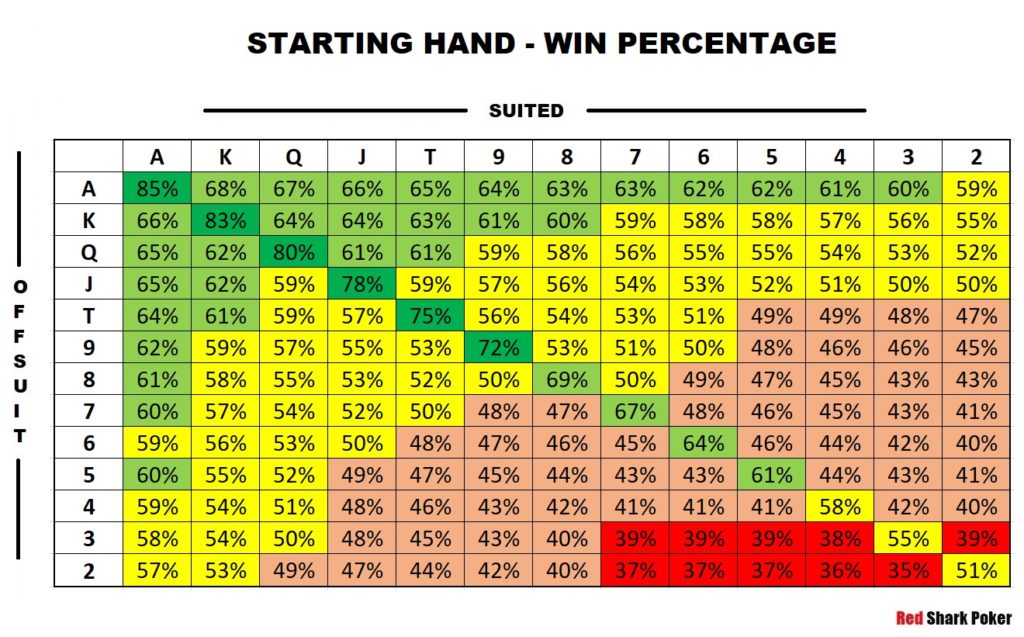
Choose Your Starting Hands According to Position
Positions at the tables play an important role in your starting hand selection. There are three types of positions in poker: Early Position, Middle Position and Late Position. Let’s look at the different positions in 9-max and 6-max games.
9-max Poker Positions
The different positions in 9-max games are as follows:
Early Positions: Small Blind, Big Blind, Under the Gun (UTG) and Under the Gun + 1 (UTG+1)
Middle Positions: Middle Position (MP) and Middle Position + 1 (MP+1)
Late Positions: Hijack, Cutoff and Button
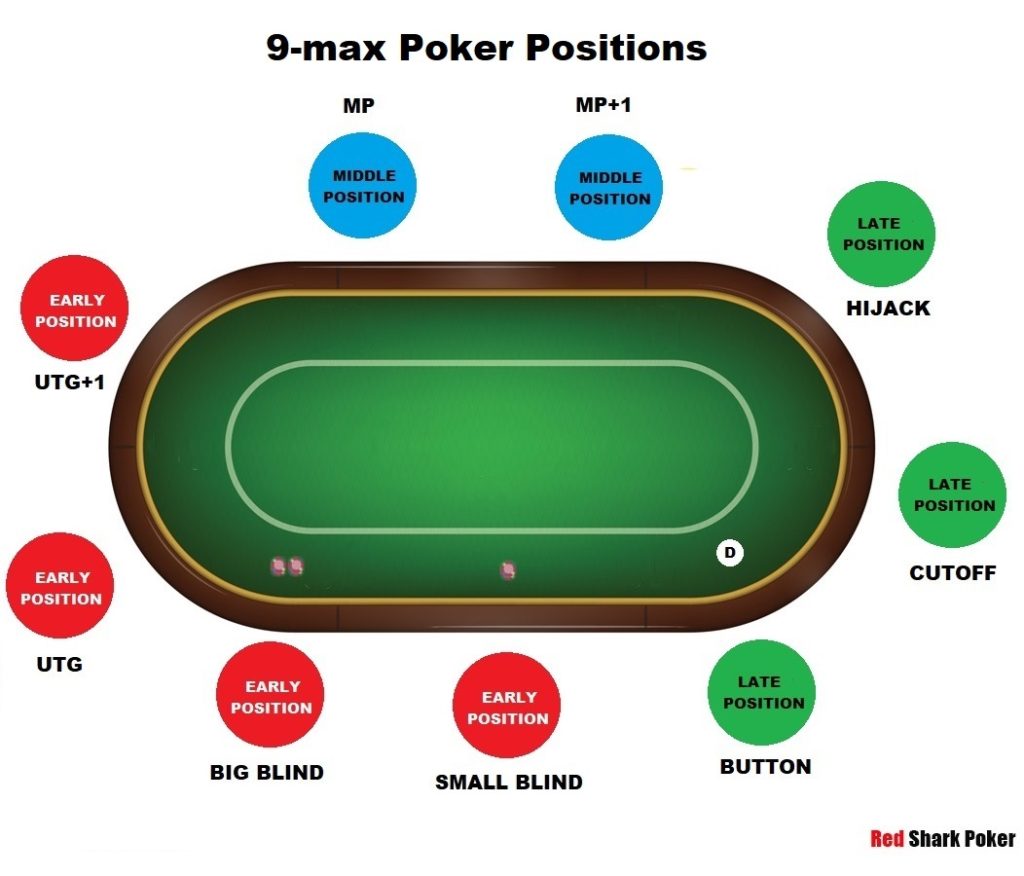
6-max Poker Positions
The different positions in 6-max games are as follows:
Early Positions: Small Blind, Big Blind, Under the Gun (UTG)
Middle Position: Middle Position (MP)
Late Positions: Cutoff and Button
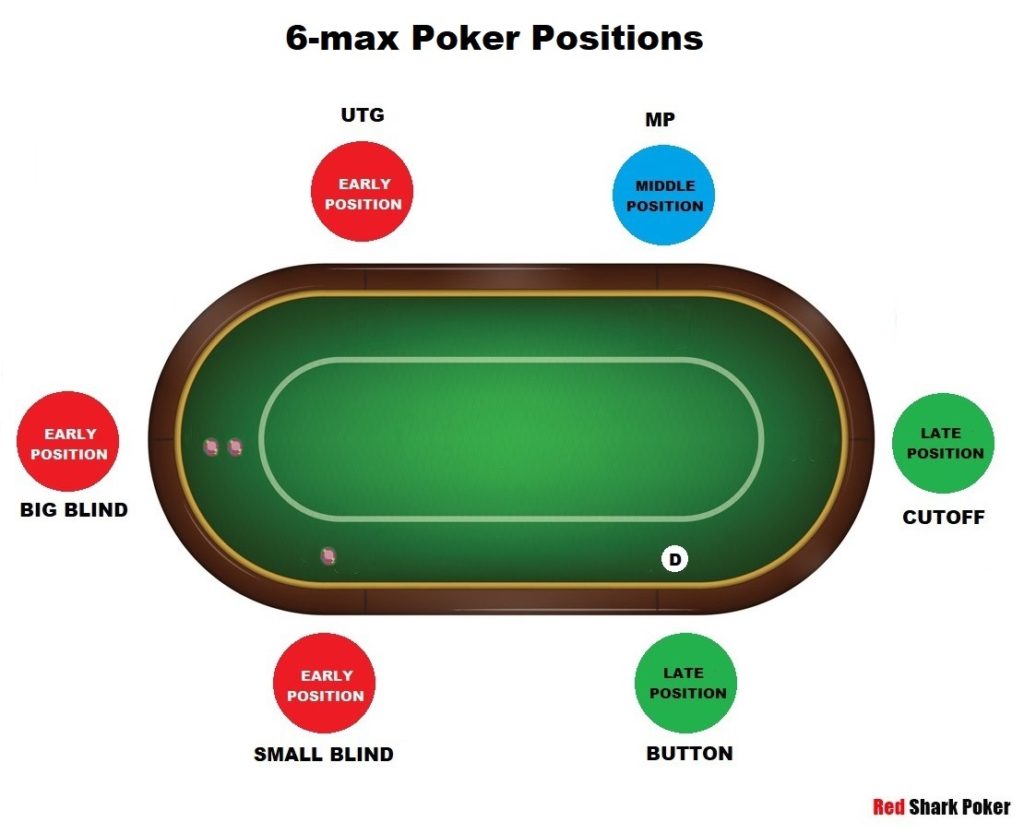
Starting Poker Hand Selection According to Positions
You need to choose your starting poker hands according to your position at the tables. The golden rule of poker hand selection is as follows:
Earlier the Position = Stronger Hands to Play
This is based on a simple logic: If you are in an early position, you will be the first player to act. So, your starting poker hand has to be stronger than your opponents who are in later positions. If you play with a weak starting hand, there is a possibility that your opponents in late positions might be holding a stronger hand.
Early Position Poker Starting Hands
If you are a beginner, Y]you should play with the top 10% of hands from early positions. As you will be the first player to act, you should play only with strong starting poker hands. You can refer to the Early Position starting hands chart below:
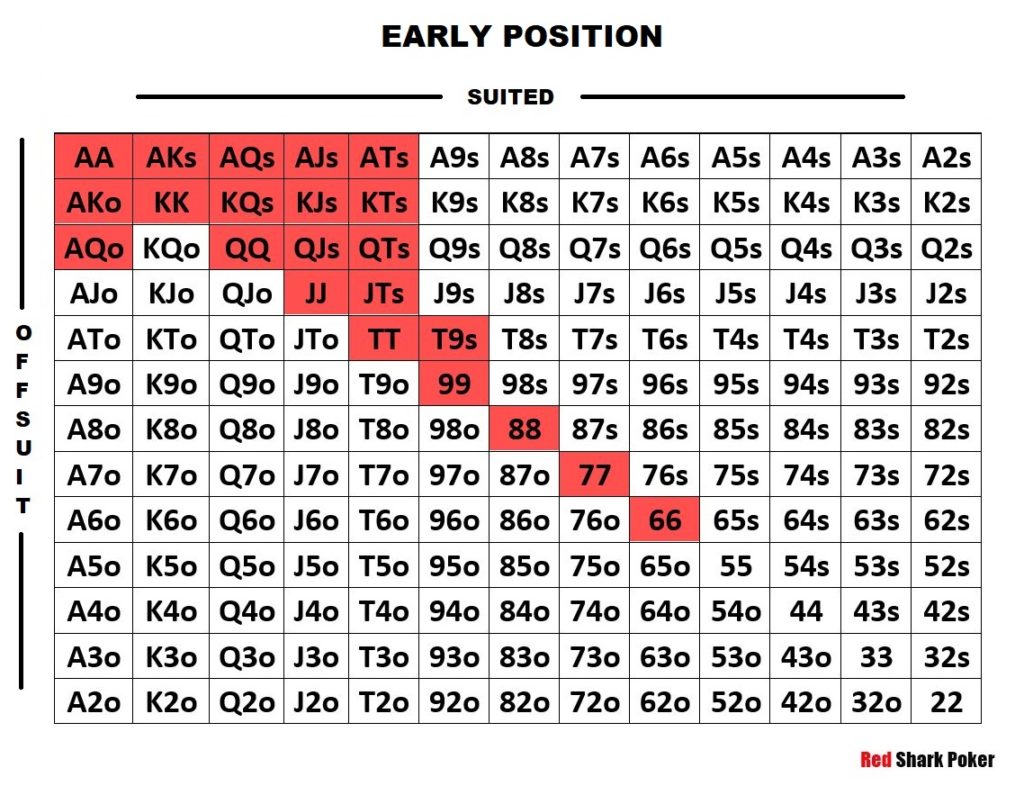
Middle Position Poker Starting Hands
You should play with the top 19% of hands from middle positions. When you are in a middle position, you are not the first person to act and you can widen your starting poker hand range. You can refer to the Middle Position starting hands chart below:
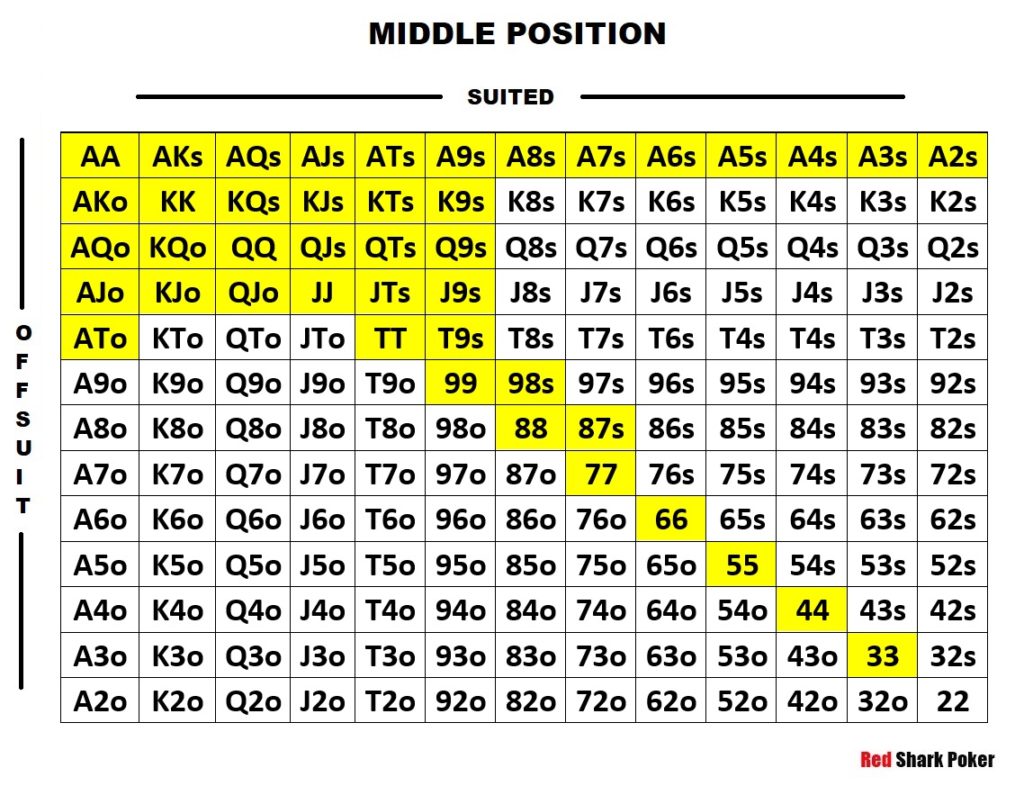
Late Position Poker Starting Hands
You can play with the top 45% of hands from late positions. When you are in a late position, you will act last and have the added advantage of analyzing your opponents’ actions. So, you can have a much wider starting poker hand range. You can refer to the Late Position starting hands chart below:
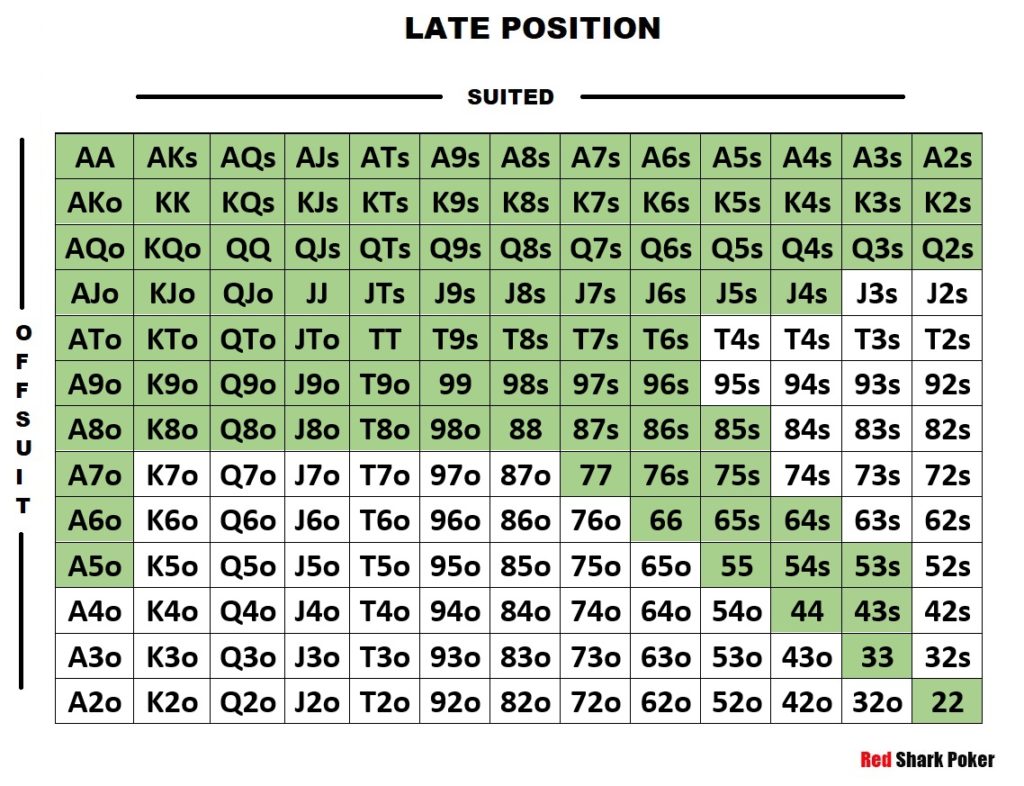
Read: Complete Poker Position Guide for Beginners
Conclusion
Apart from being a mathematical and logical game, poker is also a psychological game. You need to know what type of opponent you are up against. You must keenly observe your opponent’s moves, betting patterns, preflop and post-flop tendencies, and the starting hands he calls, raises and folds. For example, if your opponent plays a very few hands, you need to be very selective of your starting poker hands as you are up against someone who plays with only strong hands. Such minute observations add more value to your overall starting poker hand selection.

